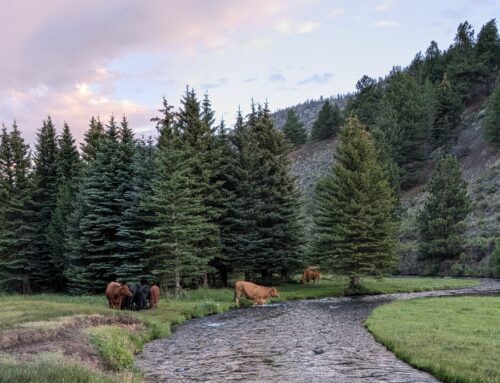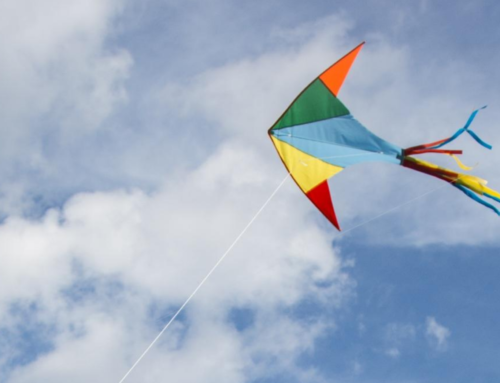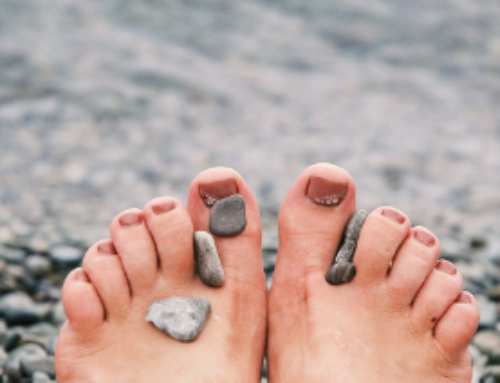Who ran to help me when I fell,
And would some pretty story tell,
Or kiss the place to make it well?
My mother.
~Ann Taylor
Moms are amazing healers, aren’t they?! To whisk away pain through gentle words, soothing touch, and sometimes an appropriately-placed kiss is remarkable! I can remember my own childhood when a scraped knee could be virtually forgotten if Mom was there to comfort me. When I awoke with an ear infection, confirmed by the doctor later with a bottle of pink antibiotic to go with the diagnosis, Mom ran me a warm chamomile bath and wrapped my head in warm towels followed by an herbal oil massage of the neck and jaw. Bliss. All of these years later, the moment I’ve got the sniffles I wish my Mom was in the room to wrap me in warm blankets, feed me one of her delicious soups, and bring me cup after cup of tea.
Many Moms are drawn to the increasing trend of using essential oils here in the United States, and like many of us, jump straight in without taking a class or consulting with a qualified aromatherapist. My goal is to offer you information that you may not be aware of so that you can make an informed decision about how essential oils will play a role in your family’s wellness plan.
Nature, the Healer
“The art of healing comes from nature, not from the physician. Therefore the physician must start from nature, with an open mind.” ~ Paracelsus
“The best friend on earth of man is the tree: When we use the tree respectfully and economically, we have one of the greatest resources of the earth.” ~ Frank Lloyd Wright
Healing ourselves with nature is as old as our species. Herbal medicine has been practiced in every ancient culture in every corner of the planet. Modern herbal medicine benefits greatly from scientific research that can prove, or dispel, the folk uses of different plants our ancestors used. Some turn into wives tales while others have been recreated in labs as synthetic pharmaceuticals.
Plants have the capacity to nourish, soothe, and promote our innate healing abilities. Plants also have the capacity to poison, drug, and kill.
Progression of Plant Medicine
 One of my incredibly wise instructors, Peter Holmes, an accomplished acupuncturist, medical herbalist, and clinical aromatherapist, shared with me that essential oils lie half-way between herbs and drugs. I’ve created a helpful progression chart here to demonstrate, for those of us who are visual learners!, the hierarchy of plant medicine concentrations:
One of my incredibly wise instructors, Peter Holmes, an accomplished acupuncturist, medical herbalist, and clinical aromatherapist, shared with me that essential oils lie half-way between herbs and drugs. I’ve created a helpful progression chart here to demonstrate, for those of us who are visual learners!, the hierarchy of plant medicine concentrations:
– Food: the foundation of plant medicine are plants that serve us as food. This is the first, and many will argue the most important, step in health and wellness — eating healthful, locally-sourced, nuts, seeds, fruits, and vegetables create a foundation for young bodies to grow and develop, and adult bodies to move through the day with stamina, fight off infections and disease, and age gracefully.
– Nutritional Herbs: just up from plant foods are nutritional herbs such as stinging nettles, alfalfa, oatstraw, and red clover. Steeped in hot water overnight, these herbs give us accessible forms of macro and trace minerals naturally drawn out of the ground during the growing process. Adult bodies can gain a lot in nutritional herbs with enhanced resilience to stressors, essential minerals for maintaining health of the musculo-skeletal systems, and improvements to digestive health through mucilaginous herbs.
– Medicinal Plants: these plants are more concentrated than the nutritional herbs, but not as concentrated as essential oils. Herbalists, and herb labs take bulk plant materials in this category and tincture them in alcohols, grind them into powders and encapsulate them, or infuse into vegetable glycerin. Herbal bitters help adult bodies to improve digestion, tinctures nudge the body to balance or bolster the immune system in times of infection. Many child-friendly herbs exist in this category such as the popular elderberry syrup for cold and flu season, chamomile for soothing fussy babies and easing body aches of older children, witch hazel hydrosol for cleansing and drying pubescent faces and irritated bottoms.
– Essential Oils: distillers take massive amounts of aromatic plant materials and extract essential oils from them using hydrodistillation and cold expression equipment. Generally 100x concentrate of the original plant materials, essential oils do not contain many of the whole plant components such as the nutritional benefits of vitamins and minerals, antioxidants, and buffers to ease into the body. These super-concentrated extracts enhance mood, have a wide range of cosmetic applications, can change pain perceptions, can have powerful anti-inflammatory and antimicrobial actions, and are used in energetic medicine to affect qi, prana, and spirit.
– Drugs: many drugs have roots in plant medicine, even if they’re synthesized in a lab. Birch is a common example of a plant medicine that transcends several of these categories – the herbal form of birch is a very diverse plant medicine tool, the essential oil though is so concentrated it is not recommended for home-use without the guidance of an aromatherapist, while the synthesized form is a drug known as Aspirin. The essential oil carries many toxicity risks that the aspirin does but is used in acute pain management by clinical aromatherapists.
Dosage Makes All the Difference
When we look at this progression it is easier to grasp the difference between the cooking herbs in Mom’s chicken noodle soup and the pounds of herbs that go into a teaspoon of essential oil. As we move into higher concentrations we must be aware of the risks, as well as the benefits that come with the increased strength.
Every Mom Needs to Know that Essential Oils…
- Are not user-ready straight out of the bottle – like anything at 100x concentration, essential oils have to be diluted before they are skin-safe for adults and children. Likewise, if you’re planning on diffusing them in a vaporizer the amount and length of time need to be accounted for. This is known as dosing and is dependent entirely upon the age, health history, constitution, and intervention for the individual involved. Essential oils are like the super-concentrated extracts you find in baking — a teaspoon of vanilla will flavor your entire cake and 2 drops of food coloring will color an entire bowl of icing. If you don’t know how to dilute for specific ages and health considerations, ask an aromatherapist!
- Require a basic understanding of aromatic chemistry – it is the chemistry of an essential oil that will determine its therapeutic actions, drug interactions, organ toxicity, and give us safety guidelines for things like age-appropriateness, length of use, type of applications, and dosage. Aromatherapists around the country offer Aroma101 type classes and courses that cover this necessary foundation to using essential oils safely at home. For those expert self-study type moms who can pick up where their organic chemistry professors left off in graduate or nursing school, E. Joy Bowles “Chemistry of Aromatherapeutic Oils” will be a helpful guide. Be wary of sales pitches marketed as classes and books published simply to sell products to you!
- Carry very real risks for infants and children – thousands of distraught parents and caregivers place calls to poison control centers across the United States about pediatric poisonings every year. Deaths, while rare, do occur when children consume essential oils by mouth. Hospitalizations for hepatotoxicity, neurotoxicity, loss of breathing, and loss of consciousness are happening at an increasing rate – likely due to the increasing popularity of essential oils in the last decade. Some essential oils (Peppermint, Eucalyptus, Ho Leaf, Rosemary ct. camphor) act on the cold receptors of a child’s lungs and cause him to stop breathing as the lungs cannot fill with his next breath. Each essential oil has specific safety guidelines set forth by national and international organizations that any qualified aromatherapist can point you to.
- Are not water-soluble – essential oils and water do not mix, they need a dispersant before they’re added to the bath (I like almond milk and honey), and should never be added to drinking water.
- Should not be your first plant-medicine choice for children – most children do not need such a concentrated plant intervention such as essential oils. For example, a baby with a diaper rash needs to be assessed for diet, switched to cloth diapers, and gentler remedies such as arrowroot powder and baby-safe herbal spritzers or diluted baby-safe hydrosols should be turned to first. In the event that diet, routines, baby-safe herbs or hydrosols are not addressing the issue then bring in a baby-safe essential oil in a baby-safe dilution. One need not put out a candle flame with a fire hydrant!
- Do not replace drugs in your medicine cabinet – while this is a trendy way to market essential oils right now it is very deceptive and the FDA is threatening federal imprisonment and fines because of these illegal marketing tactics. Essential oils are ethically and safely used in holistic treatment plans across the country by aromatherapists with specific training in aromatic chemistry, anatomy and physiology, and the science-art of aromatherapy. When essential oils are used to treat symptoms and not address root imbalances things can go quite awry at home. Take the mother that used peppermint essential oil on her young child to bring down a fever which instead contributed to an upsetting seizure incident which landed the young child in the intensive care unit for days. Would this baby have been spared such a horrific incident if the mother had known the herb is child-safe while the essential oil is a powerful neurotoxin to developing nervous systems under the age of ten?
Holistic Practitioners Are Your Wellness Allies
Raising healthy children is no small feat! But, you certainly are not alone in your quest to balance safety and efficacy of wellness routines while running from soccer practice to ballet to yoga. Choose your family’s wellness team from highly-qualified practitioners in your community that fit your family’s philosophy of health and wellness. For some families this team might look like: pediatrician, homeopath, acupuncturist. For other families it might look like: pediatric naturopath or osteopath, aromatherapist, reflexologist. Interview local practitioners that specialize in working with children, even better if they work with whole families so kids and parents can get comprehensive wellness care!
Aromatherapists must meet the minimum of 200 hours of aromatherapy-only education which includes training specific to the childbearing year and pediatrics. Safety protocols are updated regularly as new information comes from rigorous testing of essential oils and hydrosols by researchers in labs around the globe. As a clinically-trained Aromatherapist I love helping families find ways to enhance their wellness routines with aromatherapy. Some examples of ways I work with families:
– Treatment plans for seasonal wellness
– Treatment plans for constitutional imbalances
– Treatment plans for special needs children
– Treatment plans to reinforce learning patterns in school-aged children
– Treatment plans for moon days, growth phases, and transitions that honor and support the transition into puberty and adulthood
When I work with families I am keenly aware of the intuition of the parent/caregiver on the child(ren) he/she is entrusted with. This is a role I feel deeply honored to participate in as we work together, as a team, to draw up plans that nurture, inspire, and encourage balance. Learn more about my process and information on scheduling an appointment at either of my Austin, Texas clinics or via phone/Skype.








Thank you, thank you, thank you for this article! As the mother of a 5 year old, safety is a first and foremost concern of mine when using essential oils.
You’re very welcome, Sara! I’m so glad to hear that!
Excellent oil, I’m very cautious with baby’s, young children and pregnant moms.
These populations deserve our utmost care and attention to current safety guidelines, Jerri, well done!
Yes we should always use caution, but have you seen what are in chemical medications and the side affects?! I trust nature hands down over medications!!
Lorri, I see this marketing argument come up fairly often, and I find it intriguing that dozens of different people can ask the same question over and over. I’m not a pharmacist, but I do research and study a variety of medications when I am working on treatment plans so I do have a better-than-average overview of the chemistry involved in pharmaceuticals.
Since I’m not a pharmacist though, and that’s not the point of this article, let me pose this question to you: Do you know what chemicals are found in a bottle of an essential oil? Some constituents found in essential oils can cause organ failure, depress the nervous system, poison the body, cause cancer, cause birth defects, trigger a miscarriage, destroy the lining of the esophagus, cause permanent digestive system issues, and in rare cases can lead to death. I trust my education in aromatic chemistry to keep myself and those I educate and consult with safe from harm. Blindly trusting something “natural” without understanding the risks puts yourself and your family in danger of a potential overdose or accidental injury. If we don’t give ourselves permission to weigh the risks of something and find the balance for our families do we really have control over our health or are we just blindly following some glossy brochures that want us to buy more products?
THIS. A million times this. Just because something is “natural” does not make it “safer.” Also many pharmaceuticals, as Amy describes in the case of Asprin, are derived from chemicals found in nature. Vinicristine, an anti-tumor alkaloid used in the treatment of childhood leukemia is from the plant Madagascar Periwinkle. Pharmaceuticals offer the exact same chemical only more cost effectively and without damaging the natural population of a plant.
Thank you Amy!
I agree with Lori I don’t understand how using essential oils neat is more dangerous than Tylenol musinex or antibiotics created in a lab.I used peppermint oil on my son the other day on the back of his neck every couple hours and his fever broke the same day. I agree people should do their research and not just trust what they find on the internet. However if you’re going to tell people not to use oils you should have Medical references that show that they harm you, otherwise you’re just doing the same thing as the people who are using the essential oils you’re telling people don’t do it but have nothing to back it up.
I’ve never seen any research that suggests using a product at 3900% stronger than the recommended adult dose on a child is safe. If you need help finding citations and resources feel free to get in touch for a consult or come to one of my classes where we discuss these things in detail. Happy to help parents find the information that they need to make an informed decision about their family’s wellness, which is the entire point of my article here.
I would love to see this research I have used essential oils ,only pure good ones, for several years, topically and internally. Where do you see that peppermint is 400X the dosage? Please post citations,thanks
The recommended adult dermal dose is 2.5% with a maximum dermal dose of 5%, so 100% (undiluted) would be 3900% stronger than recommended for an adult. There is not a pediatric dose recommendation prior to age 6. Dermal limits for this particular essential oil are based on data from the Herbal Medicine: Expanded Commission E Monographs, The Complete German Commission E Monographs—Therapeutic Guide to Herbal Medicines, the European Medicines Agency, Essential Oil Safety 2e (Tisserand 2014).
I appreciate your article however can you disclose your source/sources about the constituents found in essential oils and their side effects? I’m new to using oils and I have found limited info. Also, is this based on what is considered “Therapeutic grade”?
Hi Anita – this is basic aromatic chemistry. Every essential oil, no matter the brand or marketing term used to sell it, is made up of chemical constituents. Understanding those chemicals and their actions is at the root of aromatherapy, which is also known as essential oil therapy. Any GC/MS report will tell you the constituents found in a batch of essential oil. The book I referenced is a good starting point to understanding aromatic chemistry. If you’re keen on studying look for aromatherapy programs that are being taught by teachers with a legacy in non-sales education and have a robust CV.
As to the “therapeutic grade” conundrum, here’s a good read from a website that does not have a conflict of interest in earning an income from selling you a product: http://www.aromaweb.com/articles/therapeuticgradeessentialoils.asp.
Dear Amy. Excellent piece. Question, what if you included dads? Easy enough to do. Just add one word… Dad… and include the rest of the family.
Blessings
Patrick Houser
http://Www.fatherstobe.org.
Excellent point, Patrick! More Dads should be involved in the wellness care of their children. I will keep this in mind for my future writings. Thanks for stopping by!
Good to know. Thank you.
Thank you! Ever since essential oils have started “trending” I’ve been suspicious about them. I’ve been looking for EXACTLY this information. Thank you so much for putting it out there!
I totally see your concern with non-educated people using EOs. Isn’t that the problem, though? Not the oils themselves, but who is using them. Let’s not declare EOs as just “trendy” and therefore unsafe because there are people who don’t take the time to educate themselves on how to use them. I’ve seen several aromatherapists on the war-path about people using EOs. Then people say, “see, I knew they were just a gimic to get me to buy something.” We can misuse just about anything to a point of harm! The point here is be educated. Be educated about your food supply. Be educated about your beauty products. Be educated about A LOT of things. Knowledge is power. The company whose EO products I use provides great education to their customers. It is unfortunate that some will not take the time to learn it. It seems a little controlling to say we can only use EOs if we “PAY” to see an aromatherapist. The FDA doesn’t want people using EOs because it takes away from “Big Pharma”. We can work together to educate people and get healthier without “freaking” people out. Of course, I don’t expect you to agree but thought I would give my opinion. 🙂
Joy- I have no issues paying experts to advise me in areas I have no formal education in nor have any interest in obtaining said education. As an example, I pay my primary care physician for my annual appointment since he is an expert in his field and I have no interest in going to medical school for 6 years; I pay my mechanic to rotate the tires of my car and change the oil as he is an expert in his field and I have no interest in going to mechanic school for 18 months; I pay my accountant to help me with my accounting records and file my taxes as she is an expert in her field and I have no interest in going to accounting school for 4-6 years. If someone does not wish to consult with a qualified aromatherapist he or she can go to aromatherapy school for 12-18 months. Most of my clients come to see me because I have 18 years of training and clinical practice in holistic medicine and they have little interest in paying thousands of dollars in tuition to train in modalities they may not actually wish to practice themselves.
Americans are quite suspicious of pharmaceutical companies influencing doctors as they help their patients navigate a path to health and healing and I don’t see a difference if a company that sells a product would be a reliable source of unbiased education in said product, which isn’t limited to the field of aromatherapy.
Thx so much! I had been putting pure peppermint oil on my stomach for indigestion,now will dilute it in a carrier oil! I so appreciate your information on safer ways to use eo’s. Do you have any recommendations for a reference guide on safe uses or doses of Eo’s?
Peppermint is contraindicated for indigestion, I’d recommend sitting down with a qualified aromatherapist for a comprehensive consultation, Cathy. There are many good books but nothing can replace a individualized consult with someone with a background in aromatic chemistry and holistic medicine.
My mom used a couple of essential oils so I’ve known about them all my life. Now that they are “trending” it’s easier and cheaper to find them but I’m amazed at the claims being made about them by people who have no training. Many of those who have a vested interested in the oil as they are selling them in MLM are the worst sources of good information although they make it sound as though they are so very knowledgeable.
Thank you for your information here.
I have a friend that is a BSN and she does put a drop of lemon oil in her water everyday and she says she no longer has to take Prilosec for heartburn. Could this be doing more harm than good for her since she is mixing it in water?
Aspirin has its origins in the willow, not the birch tree, though there can be cross-allergeries to birch if you are allergic to aspirin.
A number of herbs give us Salicylates, including willow, birch, and wintergreen. There are a variety of edible plants that also give varying levels, reference: http://pubs.rsc.org/en/Content/ArticleLanding/2011/FO/c1fo10128e#!divAbstract. Salicylate toxicity is a very real concern with essential oil dosing, reference: http://www.acmt.net/cgi/page.cgi/zine_service.html?aid=4210&zine=show
I believe the reason the other individual sited willow is because Buchner first extracted crystals from willow which he deemed salicin . This discovery then went on to the creation of aspirin by the Bayer Corp. I agree with your statement that there are many plants which contain Salicylates. Willow is most prominently associated with the development and patent of aspirin. Good article and information.
Thank you for this information. It makes perfectly good sense that if people worry about doctors being influenced by Big Pharma and guiding them toward particular drugs that might not be the best choice for them, they should be even more concerned about being influenced by someone who has not received extensive (EXTENSIVE) education but who is “prescribing” and selling an incredibly potent product and making money from it.
I wonder if in a few years, people will realize the damage that is actually done by well-meaning people who are trusting extremely strong doses of “therapeutic grade” natural chemicals. Tobacco is natural, too, and look how that turns out for people who use it. The difference here is that essential oils DO have health uses, but when they are overdosed, they are as toxic as tobacco if not more so. Tobacco can take years to kill someone with lung cancer, but liver failure can kill very quickly.
It seems prudent to learn the safe ways to use essential oils, which would not include ingesting or undiluted use. Again, thank you for the information!
Hi Amy – do you recommend a great book to read up on how to properly use essential oils. I do understand you recommend speaking to an herbalist however while in the mean time. My boyfriend and I both use essential oils quite regularly and sometimes undiluted, so now I’m so worried! I have been using tea tree/rosemary/franc on my face pretty often, and we have been sleeping with our diffuser on almost every night, although it is intermittent.
Thank you so much – Heather
Not a single book can cover what you’re looking for but I have some book lists under the Learning Center tab you may find interesting. You’ll save yourself a few hundred bucks going for a consult with a qualified aromatherapist though. Keep in mind many herbalists have no formal training in aromatherapy (the therapeutic use of essential oils and hydrosols), you’re looking for someone who meets a minimum of 200 hours of aromatherapy-only education and offers private consults versus a formulator FWIW.
Hi I immediately warned my daughter to stop using an oil that she was using on her face that had essential oils in it of course they got the “recipe” off of Pinterest a friend used it and raved about it. I feel that the marketing of these oils is aimed at people that want a more natural lifestyle health wise but have limited income and also at the evangelical population telling us to support one another which is a good thing but I wonder if the originator of this tactic has pure motives? Anyway I also bought some essential oils but they set unused because I fear exactly what you are talking about ,I myself do not have the training and I know how much harm too much of a good thing can have. I don’t want to throw the baby out with the bath water but also the old saying “if it sounds to good to be true it probably is ” a good ruler to measure these sales tactics which even myself fell for. When you are in a group of people all parroting the same thing it is hard to stand apart. I now have buyers remorse ? And I might add these oils are so expensive that a trip to a trained aromatherapist could surely not be any more expensive than a trip to the ER? Thanks for swimming against the tide
I’m going to use some of this information tonight at my class. It gives me a really clear way to show the people attending what EOs are.
Ren – you can get in touch at https://www.thebarefootdragonfly.com/contact to inquire about reprint rights and usage. Please note that all of my work is copyright protected under the Digital Millennium Copyright Act (DMCA) and requires written authorization to republish or reproduce in any format both on and offline.